Ford is making waves in the electric vehicle (EV) market with its new Lithium Manganese Rich (LMR) battery technology. This innovative battery chemistry promises to be safer and more affordable than traditional options, which could change the game for EVs. As the company ramps up production and integration of LMR batteries, the future of electric vehicles looks brighter and more accessible than ever before.
Key Takeaways
- Ford’s new LMR batteries aim to enhance safety and reduce costs for electric vehicles.
- Lithium Manganese Rich technology offers better thermal stability and a lower risk of fire.
- Production of LMR batteries is expected to be more cost-effective due to cheaper materials and efficient manufacturing methods.
- Ford plans to integrate LMR batteries into its upcoming vehicle models within the decade.
- The environmental impact of LMR batteries is being considered, focusing on sustainable sourcing and recycling.
Ford Develops New LMR Battery Chemistry
Overview of LMR Technology
So, Ford’s making a big move with something called Lithium Manganese Rich (LMR) batteries. Basically, they’re trying to make EVs better. LMR tech is all about using a different mix of materials to create batteries that are safer, last longer, and don’t cost a fortune. It’s like finding a new recipe for the same dish, but this time it tastes better and is cheaper to make. Ford sees LMR as the next step after using other battery types like nickel cobalt manganese (NCM) and lithium iron phosphate (LFP). They’re even producing second-generation LMR cells at their pilot line, which is pretty cool.
Benefits of Lithium Manganese Rich Batteries
Why is everyone so hyped about LMR batteries? Well, there are a few good reasons:
- They’re supposed to be safer than some other types of batteries. Less risk of things going wrong, which is always a plus.
- They could pack more energy into the same space, meaning longer driving ranges for EVs. Who doesn’t want to drive further on a single charge?
- And the big one: they’re aiming to make them cheaper to produce. Cheaper batteries mean cheaper EVs, which means more people can afford them.
LMR batteries are not just a theoretical concept. Ford is actively working to scale LMR cell chemistry and integrate them into their future vehicle lineup within this decade. This shows a real commitment to making this technology a reality.
Comparison with Existing Battery Chemistries
Okay, so how do LMR batteries stack up against what’s already out there? Here’s a quick rundown:
| Feature | LMR Batteries | NCM Batteries | LFP Batteries |
|---|---|---|---|
| Cost | Potentially Lower | Moderate | Lower |
| Energy Density | Higher than LFP, competitive with NCM | High | Lower |
| Safety | Improved Thermal Stability | Moderate | Good |
| Longevity | Promising, still under development | Well-established | Good |
| Material Sourcing | Aims for more sustainable manganese sourcing | Relies on cobalt, raising ethical concerns | Uses abundant iron and phosphate |
Ford added lithium iron phosphate (LFP) batteries in 2023. LMR is the answer to ‘what next?’
Safety Improvements with LMR Batteries
Enhanced Thermal Stability
Okay, so one of the big things about these new LMR batteries is that they’re supposed to be way more stable when things get hot. You know how some batteries can get a little… spicy when they overheat? Well, the idea here is that LMR chemistry chills out a lot more. This enhanced thermal stability means a lower chance of anything going wrong if the battery gets too hot, which is a pretty big deal for safety.
Reduced Risk of Fire
Following on from the thermal stability, you’re also looking at a lower risk of fire. Because the battery materials are more stable at higher temperatures, it’s less likely that you’ll end up with a situation where the battery catches fire. That’s obviously a huge win for everyone involved. Think about it: less worry about your car turning into a bonfire. Ford started with NCM batteries, then added LFP batteries. LMR is next, and it’s supposed to be safer.
Safer Manufacturing Processes
It’s not just about what happens when the battery is in your car, it’s also about how they’re made. With LMR batteries, you’re looking at potentially safer manufacturing processes too. This could be because the materials used are less hazardous, or because the manufacturing process itself is less risky. Either way, it’s good news for the people who are actually making these things. Ford is already producing second-gen LMR cells at their pilot line.
Basically, what you need to remember is that LMR batteries are designed to be safer from start to finish. From the materials they’re made of, to how they’re manufactured, to how they perform in your car, safety is a key focus. It’s not just about making EVs go further or cost less, it’s about making them safer for everyone.
Cost-Effectiveness of LMR Battery Production
Lower Material Costs
One of the biggest advantages of Lithium Manganese Rich (LMR) batteries is the potential for lower material costs. You see, LMR batteries use less of the expensive materials like cobalt and nickel that drive up the price of other battery chemistries. Manganese, on the other hand, is more abundant and cheaper to source. This shift in material composition directly translates to savings in the overall production cost of the battery.
Streamlined Manufacturing Techniques
LMR batteries also lend themselves to simpler manufacturing processes. Because of their improved thermal stability, you can potentially reduce the need for complex cooling systems during production. This not only cuts down on equipment costs but also simplifies the entire assembly line. Less complexity means fewer steps, faster production times, and ultimately, lower manufacturing expenses for you.
Potential for Economies of Scale
As LMR battery technology matures and production volumes increase, you can expect to see significant economies of scale. With larger production runs, the cost per battery decreases due to factors like bulk purchasing of materials, optimized manufacturing processes, and reduced overhead costs. This makes LMR batteries an increasingly attractive option for automakers looking to produce affordable EVs for the mass market.
The move to LMR batteries is about making electric vehicles more accessible to everyone. By reducing the cost of the battery, which is the most expensive component in an EV, you’re paving the way for more affordable and competitive electric cars.
Integration of LMR Batteries in Future Vehicles
Timeline for Implementation
Okay, so you’re probably wondering when you’ll actually see these new LMR batteries in Ford’s EV and hybrid offerings. Well, Ford is aiming to integrate them into their vehicle lineup within this decade. That’s the big picture. They’re not messing around either; they’re already producing second-generation LMR cells at their pilot line. It’s all about scaling up production and getting these batteries ready for prime time. It’s a process, but it sounds like they’re making good progress.
Expected Vehicle Models
Which vehicles are likely to get the LMR battery treatment first? That’s the million-dollar question, isn’t it? While Ford hasn’t specifically named models, it’s a safe bet that their electric vehicles will be the initial focus. Think about the Mustang Mach-E, the F-150 Lightning, and maybe even the E-Transit. These are the vehicles that stand to benefit the most from the improved safety, density, and cost-effectiveness of LMR batteries. Expect to see LMR batteries rolled out across a range of models as production ramps up.
Collaboration with Other Manufacturers
Is Ford going it alone on this LMR battery journey? Not necessarily. The automotive industry is all about partnerships these days. While details are scarce, it’s possible that Ford could collaborate with other manufacturers or battery technology companies to accelerate the development and adoption of LMR batteries. This could involve sharing research, pooling resources, or even licensing the technology. It’s all about getting these batteries into as many vehicles as possible, as quickly as possible.
It’s important to remember that developing and integrating new battery technology is a complex process. There are technical challenges, supply chain considerations, and regulatory hurdles to overcome. But Ford seems committed to making LMR batteries a reality, and that’s good news for the future of electric vehicles.
Performance Metrics of LMR Batteries
Energy Density and Range
Okay, so you’re probably wondering how these new LMR batteries stack up in terms of how far you can actually drive. Well, the initial reports are pretty promising. LMR batteries are expected to give you a noticeable boost in energy density compared to some of the current options out there. What does that mean for you? More miles on a single charge. Ford is aiming for a significant increase, which could seriously reduce range anxiety. It’s not just about bragging rights; it’s about making EVs a practical choice for more people.
Charging Speed
Nobody likes waiting around for their car to charge, right? Ford knows this, and they’re working hard to make sure LMR batteries can charge up quickly. The goal is to minimize downtime and get you back on the road ASAP. While the exact numbers are still being tweaked, the early data suggests that LMR batteries will support faster charging rates than some existing technologies. This is super important because it directly impacts how convenient it is to own an EV. Think about it: shorter charging times mean you can fit charging into your existing routine without too much hassle.
Longevity and Cycle Life
How long will these batteries last? That’s the million-dollar question, isn’t it? Ford is putting a lot of effort into ensuring LMR batteries have a long and healthy life. Cycle life, which is how many times you can charge and discharge the battery before it starts to degrade, is a key factor. They’re running tons of tests to simulate real-world driving conditions and see how the batteries hold up over time. The initial results look good, suggesting that LMR batteries will be able to withstand years of use without significant performance loss. This is crucial for keeping the overall cost of owning an EV down, since you won’t have to worry about replacing the battery pack anytime soon.
Battery performance is a complex thing. It’s not just about one number. Things like temperature, how often you fully charge the battery, and even your driving style can all have an impact. Ford is taking all of these factors into account as they develop and test LMR batteries. They want to make sure these batteries are reliable and perform well in a variety of conditions.
Environmental Impact of LMR Battery Production
Sustainable Sourcing of Materials
Okay, so when we talk about making these new LMR batteries, one of the first things that comes to mind is where all the stuff to make them comes from. It’s not just about digging things out of the ground; it’s about doing it in a way that doesn’t mess everything up. Are the mines treating workers fairly? Are they wrecking the environment? These are the questions Ford needs to answer.
- Ensuring responsible mining practices.
- Reducing reliance on conflict minerals.
- Exploring alternative, more sustainable materials.
Recycling and End-of-Life Considerations
What happens when the battery is done? It’s not like you can just toss it in the trash. We need to think about recycling these things, and not just in a “we’ll get to it later” kind of way. It needs to be part of the plan from the start. Can we get the materials back out and use them again? How much energy does that take? It’s a whole thing.
Recycling LMR batteries isn’t just about being green; it’s about making the whole process more sustainable and cost-effective in the long run. If we can close the loop and reuse those materials, we’re less reliant on new mining and all the environmental baggage that comes with it.
Carbon Footprint Reduction
The big question: how much pollution does it take to make these batteries, compared to the old ones? It’s not just about the materials themselves, but also the factories, the shipping, everything. If LMR batteries are supposed to be better for the environment, they actually need to be better, from start to finish. Otherwise, what’s the point?
- Optimizing manufacturing processes to reduce energy consumption.
- Sourcing energy from renewable sources for battery production.
- Reducing transportation emissions through localized production.
Market Implications of LMR Battery Technology
Impact on EV Pricing
LMR batteries could really shake things up when it comes to how much EVs cost. Because the materials are cheaper and the manufacturing is simpler, we might see a drop in the price of electric vehicles. This could make EVs more accessible to a wider range of people, which is a pretty big deal. It’s not just about the initial cost either; cheaper batteries could also mean lower running costs, making EVs even more attractive.
Competitive Landscape in the EV Market
If Ford’s LMR batteries take off, it could change the whole game in the EV market. Right now, companies are all fighting for the top spot, and battery tech is a huge part of that. If Ford has a battery that’s safer, cheaper, and lasts longer, they could get a serious edge over the competition. Other manufacturers might have to scramble to catch up, either by developing their own LMR tech or finding other ways to compete. It’s going to be interesting to watch how it all plays out.
Consumer Adoption Trends
How people react to LMR batteries will be key. If the batteries deliver on their promises of being safer and more affordable, you can bet more people will be interested in buying EVs. But it’s not just about the tech itself; people also need to trust it. Ford will need to do a good job of explaining the benefits of LMR batteries and showing that they’re reliable. If they can do that, we could see a big jump in EV adoption rates.
The success of LMR batteries isn’t just about the technology; it’s about convincing consumers that EVs are a practical and safe choice. This means clear communication, transparent data, and a focus on building trust. If Ford can nail this, LMR batteries could be a game-changer for the entire EV industry.
Looking Ahead: The Future of EVs with LMR Technology
In summary, Ford’s new LMR battery chemistry could really change the game for electric vehicles. With its focus on safety and cost-effectiveness, it seems like a solid step toward making EVs more accessible for everyone. The company is not just talking about it; they’re already working on producing these batteries for their upcoming models. If all goes well, we could see these LMR batteries hitting the market within the next few years. It’s an exciting time for the auto industry, and we’ll be keeping a close eye on how this all unfolds.
Frequently Asked Questions
What are LMR batteries?
LMR stands for Lithium Manganese Rich batteries, which are a new type of battery that Ford is developing for electric vehicles.
How are LMR batteries safer than other types?
LMR batteries have better thermal stability, which means they are less likely to overheat and catch fire compared to other batteries.
What makes LMR batteries cheaper to produce?
They use less expensive materials and have simpler manufacturing processes, which can lower production costs.
When will LMR batteries be used in Ford vehicles?
Ford plans to start using LMR batteries in their cars within this decade, as they are already producing the second generation of these batteries.
How do LMR batteries perform compared to current batteries?
LMR batteries are designed to have higher energy density, faster charging times, and longer life cycles, making them more efficient.
What environmental benefits do LMR batteries offer?
The production of LMR batteries focuses on using sustainable materials and aims to reduce the overall carbon footprint.

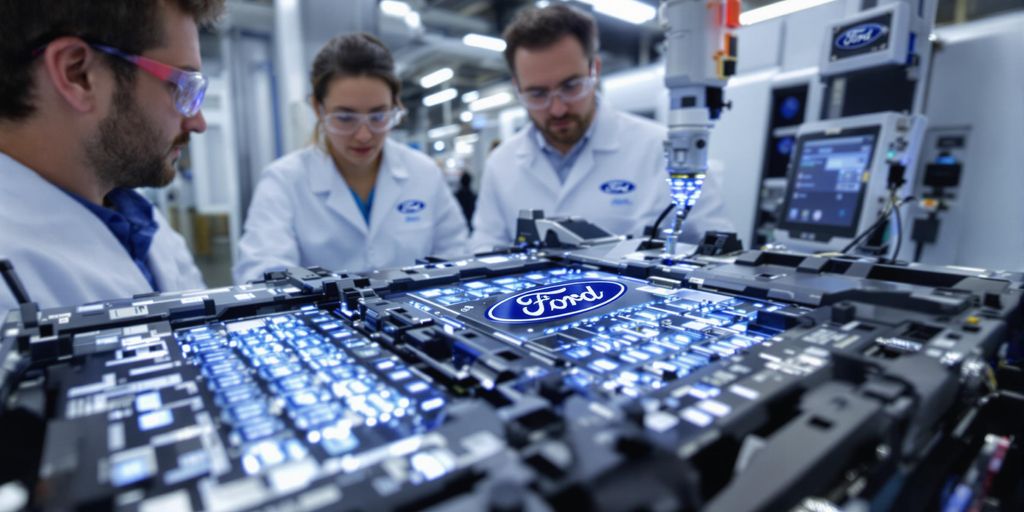


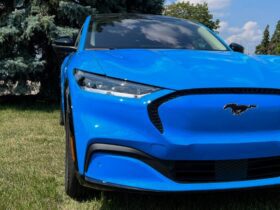



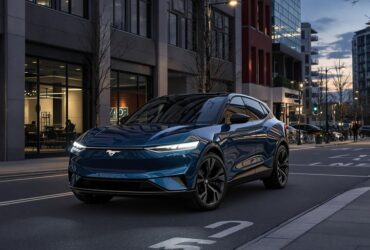

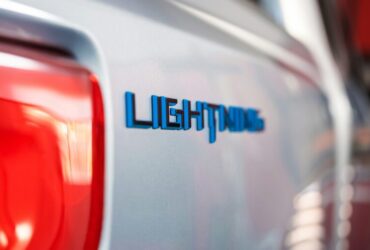

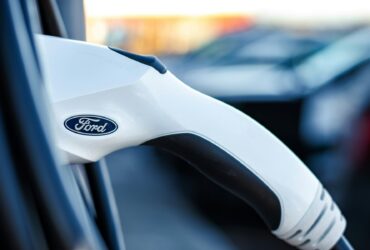
Leave a Reply